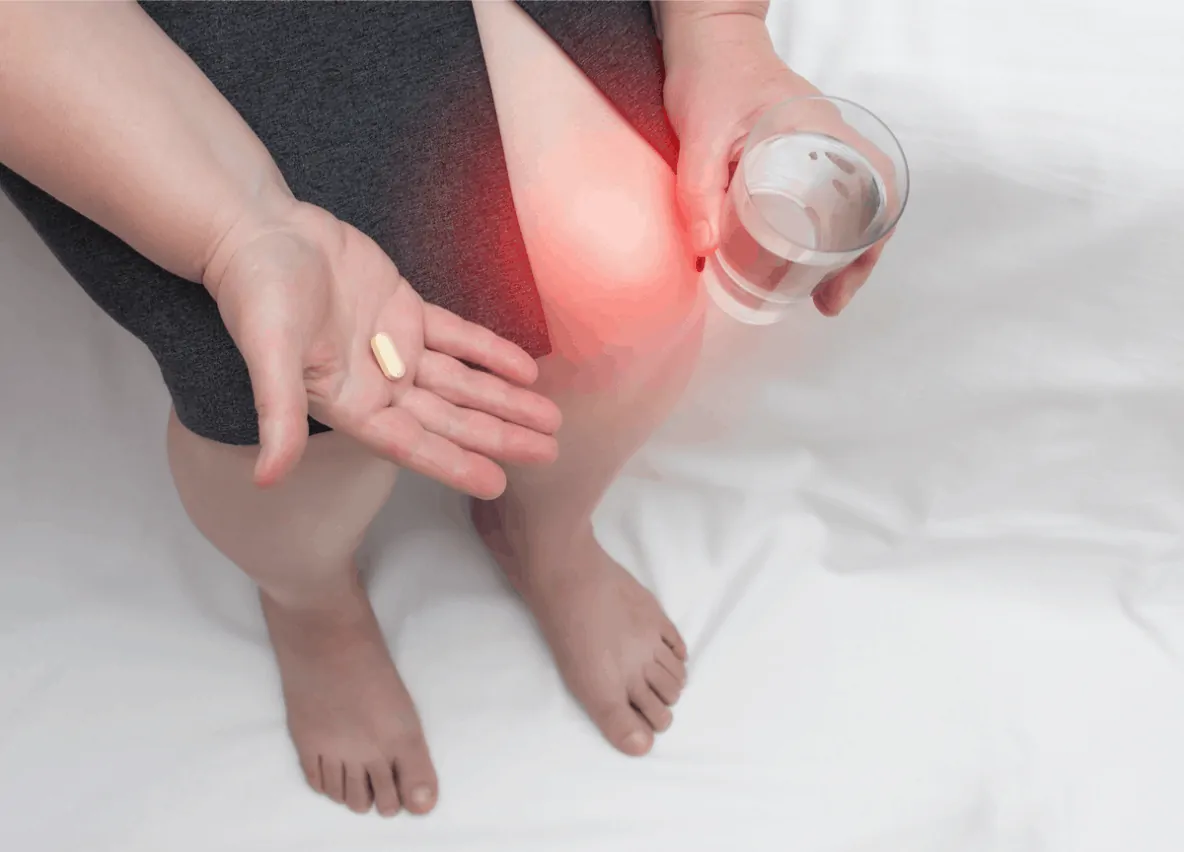Glucosamine is a dietary supplement often used by older adults and bodybuilders because these two groups of people tend to experience more joint problems than the average person.
If you’re considering taking glucosamine as a way to relieve joint pain, this chapter will explain the benefits of glucosamine and examine whether or not glucosamine is worth consideration.
4 Potential Benefits of Glucosamine
- Treats Arthritis
- Relieves Joint Pain
- Helps Build Cartilage
- Improves Joint Strength
Glucosamine is an amino acid (produced by the body) that plays an important role in building the cartilage that surrounds the joints. Consequently, many general practitioners advocate using glucosamine supplements to help decrease joint pain and slow the progression of osteoarthritis.
Some researchers also recommend taking both chondroitin and glucosamine supplements together to improve cartilage absorption.
Glucosamine for Joint and Cartilage Health
A study in the Annals of Pharmacotherapy reviewed long-term glucosamine treatment and the impact glucosamine treatment had on the progression of osteoarthritis in the knees.
This review found that taking glucosamine reduced the structural progression of knee osteoarthritis by 54 percent. However, a meta-analysis published by the British Medical Journal did not find any conclusive benefits in people taking glucosamine supplements. This meta-analysis examined over 3,000 patients who took part in a variety of glucosamine trials.
In another long-term study by the National Institutes of Health, neither chondroitin sulfate nor glucosamine supplements were more effective than a placebo when treating knee osteoarthritis. Research published in the Arthritis & Rheumatology journal corroborated these findings after examining the impact of glucosamine on knee pain.
The study examined 164 patients who experienced knee pain due to osteoarthritis. The researchers gave one group of patients a supplemental dose of chondroitin and glucosamine, while the other group took a placebo.
Unfortunately, the study stopped before completion because patients who took chondroitin and glucosamine began to report worse symptoms than patients taking the placebo. This finding shows that taking a combination of chondroitin and glucosamine might make your joints feel worse.
Although the National Institutes of Health and other review papers found improvements in people who took glucosamine, more research is needed to confirm whether or not glucosamine reduces joint pain.
Since more research is needed and glucosamine supplements are still unregulated by the Federal Drug Administration, it’s best to use caution when taking glucosamine supplements.
Safety and Side Effects
For most people, glucosamine supplements are safe. However, as with any supplement, it’s important to know about the risks and side effects associated with glucosamine.
Potential adverse reactions to glucosamine include abdominal pain, heartburn, diarrhea, vomiting, and nausea. If you take glucosamine supplements as recommended, there’s a low chance you’ll experience side effects.
Recommended Dosage
The typical glucosamine dose for adults, as approved by the U.S. National Library of Medicine, is 1,500 mg per day. You can either take this dose all at once or in small doses several times throughout the day.
Effectiveness of Glucosamine
Although glucosamine is popular among bodybuilders, weightlifters, and older adults, glucosamine’s effectiveness is not confirmed. While some studies show promise, other studies show that glucosamine offers little-to-no benefit when it comes to relieving joint pain.
According to the Arthritis Foundation, people who are interested in trying to use glucosamine and chondroitin supplements to ease osteoarthritis should speak to their doctor first.

